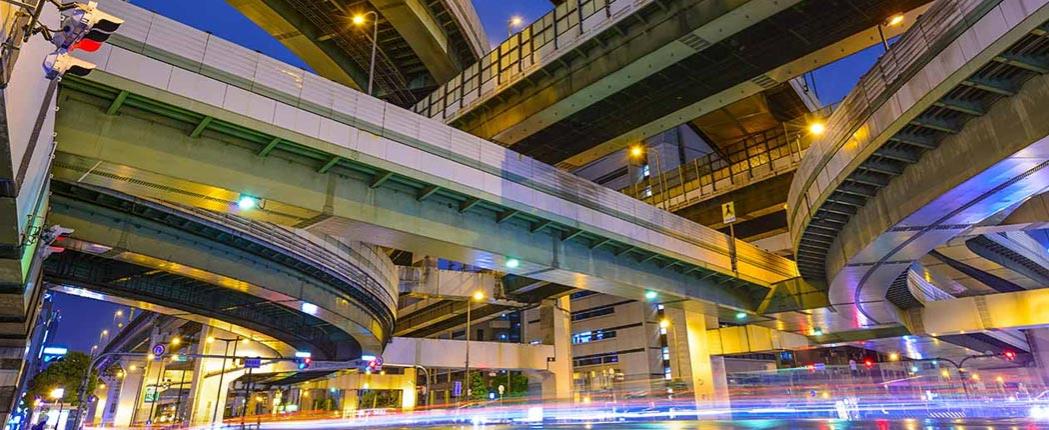Here are five sound reasons to consider adding global listed infrastructure to your portfolio.
1. It is infrastructure
Although it is a relatively new asset class, infrastructure has become an important part of institutional investment portfolios because of its unique set of attributes. The term ‘infrastructure’ refers to the massive fixed assets that provide essential services to modern societies, such as electric power/gas generation and distribution facilities, sewerage and water systems, major road, rail, air and sea links, and telecommunications installations. The concept can even be extended to ‘social’ infrastructure, such as schools, hospitals, post offices and prisons.
Because infrastructure assets provide essential services, demand is very stable and tends to grow with time, GDP and demographics. This coupled with pricing that is generally regulated or contracted and hedged to inflation allows infrastructure assets to generate highly resilient and predictable cash flows. These attributes can represent both a strong source of dividend income and an inflation hedge for a diversified portfolio.
2. It is a global growth story
It is vital that Australian investors diversify their portfolios outside Australia, because holding wholly Australian-based investments limits a portfolio’s scope to only a small part of the investable universe.
Infrastructure is a global market, with massive opportunities in both new infrastructure and refurbishment/replacement of existing infrastructure in both the developed and developing worlds. As such, infrastructure is a major structural investment thematic and growth story.
According to PriceWaterhouseCoopers, infrastructure spending worldwide will grow from US$4 trillion a year in 2012 to more than US$9 trillion a year by 2025. Overall, close to US$78 trillion is expected to be spent on infrastructure globally between 2014 and 2025, with the Asia-Pacific market representing nearly 60 per cent of this spend.
Historically, governments built infrastructure. But declining tax bases, the philosophical drive to privatisation and the demonstrated greater efficiency from the private sector means that the latter is increasingly being tasked with building and operating these investments, and in a similar way, the private sector has emerged as the principal funding source. In particular, global pension plans and superannuation funds are emerging as a natural investor in infrastructure assets and funds.
3. It is listed
While only large investors can contemplate direct ownership of infrastructure assets, the development of listed infrastructure funds allows smaller investors to participate in the asset class. Specialist global listed infrastructure funds offer investors a professionally assembled and managed exposure to infrastructure, with the ready liquidity, relatively low transaction costs and efficient pricing of the public markets.
Depending on their preference and risk/return expectations, investors can choose the more passive style of listed infrastructure fund – for example, infrastructure exchange-traded funds (ETFs) – or active managers, where manager skill and portfolio concentration can deliver alpha.
The asset class offers a broad range of investment exposures, from social infrastructure at one end of the risk spectrum to regulated assets (eg. water and sewerage utilities, distribution pipelines and transmission wires), ‘user-pay’ assets (eg. toll roads, airports, ports and railways) and ‘competitive’ assets at the more risky end (eg. communications, power generation and energy providers). Not only do these assets provide a range of risk/return profiles, they show differing behaviour compared to the stage of the economic cycle. For example, defensive assets like utilities come into their own when economic growth is flat, but user-pay assets will generally outperform utilities in periods of strong growth. Skilled portfolio managers can alter the appropriate weightings of these kinds of assets to generate alpha. Indeed, some portfolio managers adopt a narrower definition of infrastructure which excludes ‘competitive’ assets making those portfolios more appealing to risk averse investors.
4. It can generate strong returns
In its relatively short life as a discrete asset class, global listed infrastructure has earned higher returns than shares. As measured by the Dow Jones Brookfield Global Infrastructure Index, global listed infrastructure earned a return (in A$ terms) of 8.9 per cent a year over the 10 years to December 2015, versus 5.6 per cent a year (in A$ terms) for global shares, as measured by the MSCI World Index. Over the five years to December 2015, global listed infrastructure earned 16.4 per cent a year, versus 15.8 per cent a year for global shares.
5. It helps to diversify a portfolio
Global listed infrastructure typically shows lower correlation to the global share market – at about 0.4–0.5 – although the fact that the securities are listed means that the correlation is higher than it is for unlisted infrastructure. However, at the height of the global financial crisis (GFC), global listed infrastructure (like many asset classes) showed a correlation of close to 1, meaning it moved for a period in lockstep with the share market.
As a result, the five-year correlation of global listed infrastructure with global shares is running at about 0.74, although this is expected to fall as the GFC effect washes out of the numbers. As this happens, with global listed infrastructure expected to return over the next few years to a more normal correlation figure to the share market of 0.4–0.5, the asset class will once again offer a meaningful diversifier for investors seeking to potentially improve risk-adjusted returns in their portfolios.
